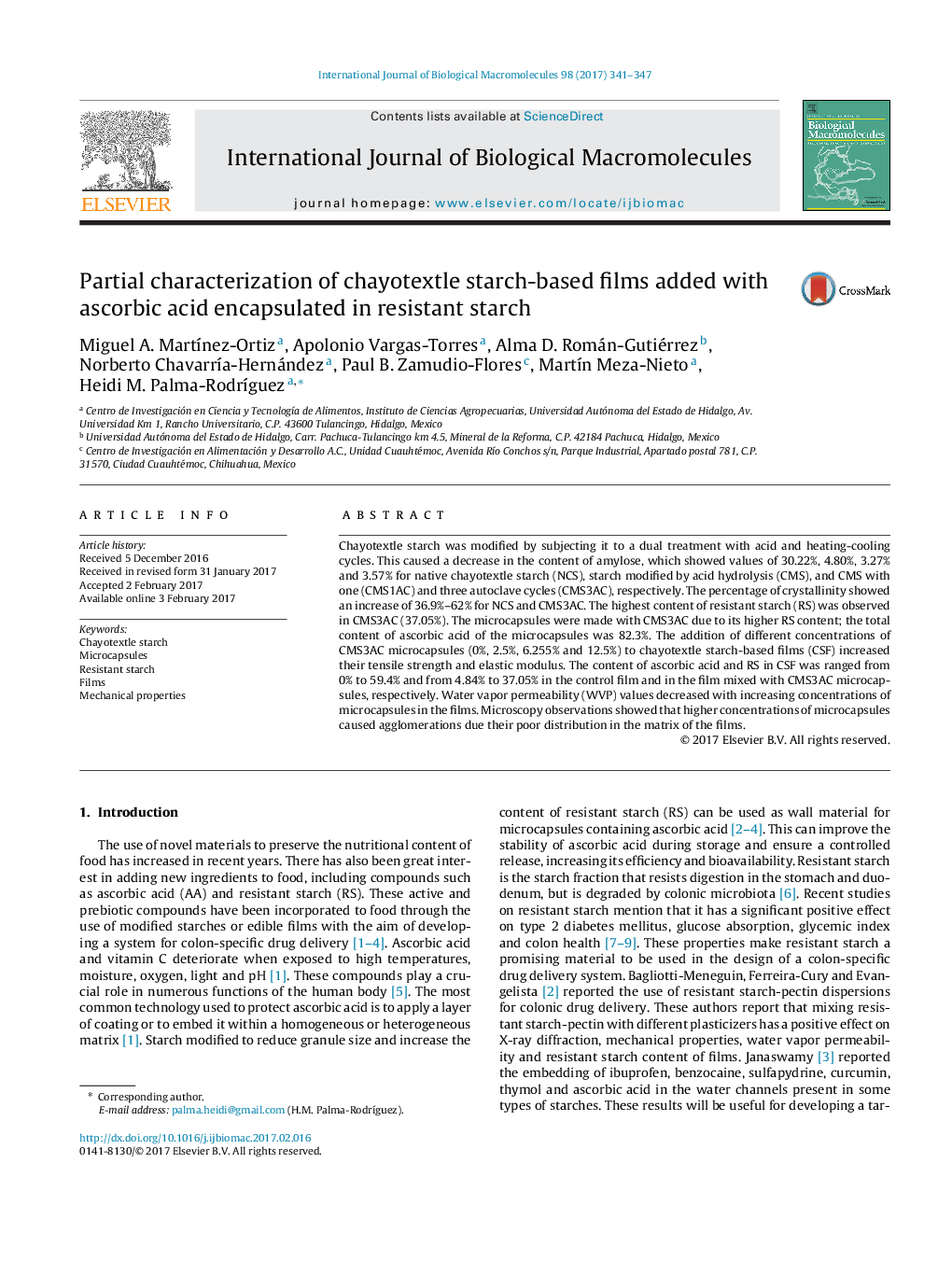| کد مقاله | کد نشریه | سال انتشار | مقاله انگلیسی | نسخه تمام متن |
|---|---|---|---|---|
| 5512282 | 1540220 | 2017 | 7 صفحه PDF | دانلود رایگان |

- The acid and thermal treatment on the chayote starch increased the values of crystallinity resistant starch and the thermal properties.
- The microcapsules made of resistant starch showed a good retention capacity of ascorbic acid.
- The mechanical properties in the films were improved when the concentration of microcapsules increased.
- The ascorbic acid content and resistant starch increased in the films due to addition of microcapsules.
Chayotextle starch was modified by subjecting it to a dual treatment with acid and heating-cooling cycles. This caused a decrease in the content of amylose, which showed values of 30.22%, 4.80%, 3.27% and 3.57% for native chayotextle starch (NCS), starch modified by acid hydrolysis (CMS), and CMS with one (CMS1AC) and three autoclave cycles (CMS3AC), respectively. The percentage of crystallinity showed an increase of 36.9%-62% for NCS and CMS3AC. The highest content of resistant starch (RS) was observed in CMS3AC (37.05%). The microcapsules were made with CMS3AC due to its higher RS content; the total content of ascorbic acid of the microcapsules was 82.3%. The addition of different concentrations of CMS3AC microcapsules (0%, 2.5%, 6.255% and 12.5%) to chayotextle starch-based films (CSF) increased their tensile strength and elastic modulus. The content of ascorbic acid and RS in CSF was ranged from 0% to 59.4% and from 4.84% to 37.05% in the control film and in the film mixed with CMS3AC microcapsules, respectively. Water vapor permeability (WVP) values decreased with increasing concentrations of microcapsules in the films. Microscopy observations showed that higher concentrations of microcapsules caused agglomerations due their poor distribution in the matrix of the films.
Journal: International Journal of Biological Macromolecules - Volume 98, May 2017, Pages 341-347